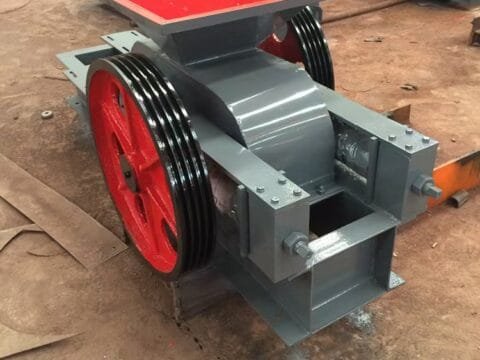
When the world produces more than 2 billion tons of municipal solid waste per year, when the soil pollution caused by mixed landfills hit the headlines, a scientific and technological revolution on waste disposal is quietly reshaping the relationship between humans and waste.
Garbage sorting equipment, as the core carrier of this change, is breaking through the efficiency ceiling of the traditional sorting mode at an astonishing speed – the latest data show that the sorting line equipped with AI recognition system can handle up to 8-10 tons per hour, which is more than 30 times of the manual sorting efficiency.

I. Technology Iteration: The Leap from Mechanical Screening to Intelligent Recognition
The first generation of waste sorting equipment was born in the 1970s, relying on simple screens and magnetic separation devices to separate metals from organic matter. Today, the multi-spectral recognition system can accurately distinguish seven material categories of plastic products, while deep learning algorithms have realized millimeter-level recognition of special garbage such as glass fragments and composite packaging.
In the experimental workshop of an environmental technology enterprise, three parallel intelligent sorting lines are performing the magic of modern technology: *near-infrared sensors* instantly scan the mixed garbage on the conveyor belt, high-speed air valves eject PET plastic bottles to an exclusive collection box with a reaction speed of 0.03 seconds, and a robotic arm equipped with pressure sensors gently sorts out intact glassware.
The recognition accuracy of this multimodal cooperative sorting system has reached 98.7%, completely changing the dilemma of traditional equipment “accidentally injuring” recyclables.
Scenario revolution: building a whole-chain processing ecology
In a large garbage transfer station, 30 intelligent sorting robots are forming a cooperative operation network. They share real-time data through the 5G Internet of Things, dynamically adjusting the sorting strategy – when it is detected that more than 60% of the day’s kitchen garbage, the system will automatically enhance the working power of the organic matter separation module. This self-adaptive processing ability makes the equipment processing efficiency increase by 40%, energy consumption is instead reduced by 15%.
More noteworthy is the modular design breakthrough. A Jiangsu equipment manufacturer launched a “building block sorting station”, allowing operators to freely combine optical sorting, bounce screen, eddy current and other 12 functional modules according to changes in waste composition.
This flexible configuration program has helped more than 30 counties to establish a sorting system in line with local characteristics, and the return on investment in equipment has been shortened to 2.8 years.
Third, value reconstruction: from cost center to profit engine
The financial statement of a solid waste treatment enterprise reveals an amazing transformation: after the introduction of intelligent sorting equipment, renewable resources recycling revenue jumped from 8 million yuan to 22 million yuan per year, while the cost of operation and maintenance of equipment accounts for only 18% of the total revenue.
This is due to the in-depth application of intelligent decision-making system – through the analysis of historical data to predict the fluctuation of scrap prices, the system can automatically optimize the sorting priority, so that the capture rate of high-value recyclables increased by 37%.
In the dimension of business model innovation, the “sorting as a service” model launched by a technology company is triggering vibrations in the industry. Enterprises do not need to purchase equipment, just pay the service fee according to the processing volume, you can get a complete solution including equipment operation and maintenance, data analysis, resource docking. This asset-light operation mode has attracted more than 200 small and medium-sized recycling enterprises to join, and the average cost per ton of waste disposal has dropped by 42 yuan.
IV. Picture of the Future: Intelligent Evolution in the Carbon Neutral Era
With the EU’s latest Waste Framework Directive requiring a municipal waste recycling rate of 65% by 2030, the global environmental protection equipment market is experiencing explosive growth. In the cutting-edge labs, *quantum dot marking technology* has enabled molecular-level traceability of plastic products, while a virtual sorting system based on digital twins can simulate and optimize sorting solutions 72 hours in advance. More excitingly, a research team developed a self-cleaning sorting module that extends the equipment maintenance cycle to 6,000 hours through bionic design, completely overcoming the industry problem of waste adhesion affecting accuracy.
In the waste treatment center of the Tokyo Olympic Games venue, the fourth generation of sorting equipment equipped with environment-aware chips is setting new records: they can not only identify the material of the garbage, but also detect the residual liquid composition, automatically classify glass bottles containing chemical reagents into a special processing channel. This environmentally responsive intelligence marks the formal entry of waste sorting equipment into the era of full-dimensional perception.
When a German industrial giant announced that the material regeneration purity of its sorting equipment had reached 99.2%, and when Africa’s first intelligent sorting plant achieved a daily average of 300 tons of mixed garbage, the global environmental protection industry is witnessing a truth: technological innovation is always the most effective environmental solution. This transformation, which began with conveyor belts and sensors, will eventually redefine the sustainable trajectory of human civilization.



